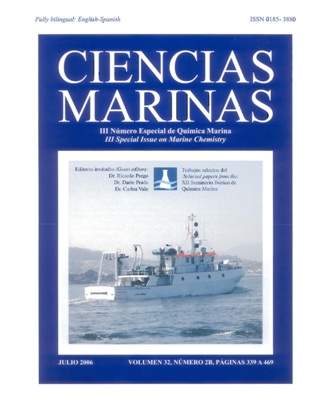Bioavailability of metals in sediments from Spanish estuaries using Carcinus maenas
Main Article Content
Abstract
Intermoult female crabs (Carcinus maenas) were used to evaluate the bioavailability of metals in sediments from three Spanish estuaries. Animals were exposed to the different sediments per replicate in glass aquaria during 21 days. A chemical analysis of the sampling sites was performed to determine the degree and nature of contamination. Salinity, pH and dissolved oxygen were controlled throughout the laboratory exposure. On day 21, the concentrations of different metals (Cu, Zn, Pb, Hg and As) were analyzed in gill tissues and in sediments. The results showed that bioaccumulation of Zn (975.50 mg kg–1) in the organisms was associated with the enrichment of this metal in the Guadalquivir Estuary after the Aznalcóllar mining spill (April 1998), while bioaccumulation of Cu (548.90 mg kg–1) showed different trends that are associated with other sources of contamination, such as the chronic spill of acidic waters in Huelva Ria. Relationships were observed between metal content in sediments and metal content in gill tissues through the biota-sediment accumulation factor. This relationship validates the use of bioaccumulation measurements to evaluate the bioavailability of metals in contaminated sediments.
Downloads
Article Details
This is an open access article distributed under a Creative Commons Attribution 4.0 License, which allows you to share and adapt the work, as long as you give appropriate credit to the original author(s) and the source, provide a link to the Creative Commons license, and indicate if changes were made. Figures, tables and other elements in the article are included in the article’s CC BY 4.0 license, unless otherwise indicated. The journal title is protected by copyrights and not subject to this license. Full license deed can be viewed here.

